Just when you thought the image quality of Phase One’s stunning IQ4 150MP full frame medium format system couldn’t get any better, today, the team have once again pushed the industry even further forward – launching the world’s first compact, digitally integrated, Field Camera – the Phase One XT.
Designed primarily for ultra-detailed landscapes and cityscapes, where compromise is not an option, the new camera delivers that promise in a much more travel-friendly form factor that just screams “destination photography” from the very first time you hold it…
…and it’s an amazing piece of kit, too.
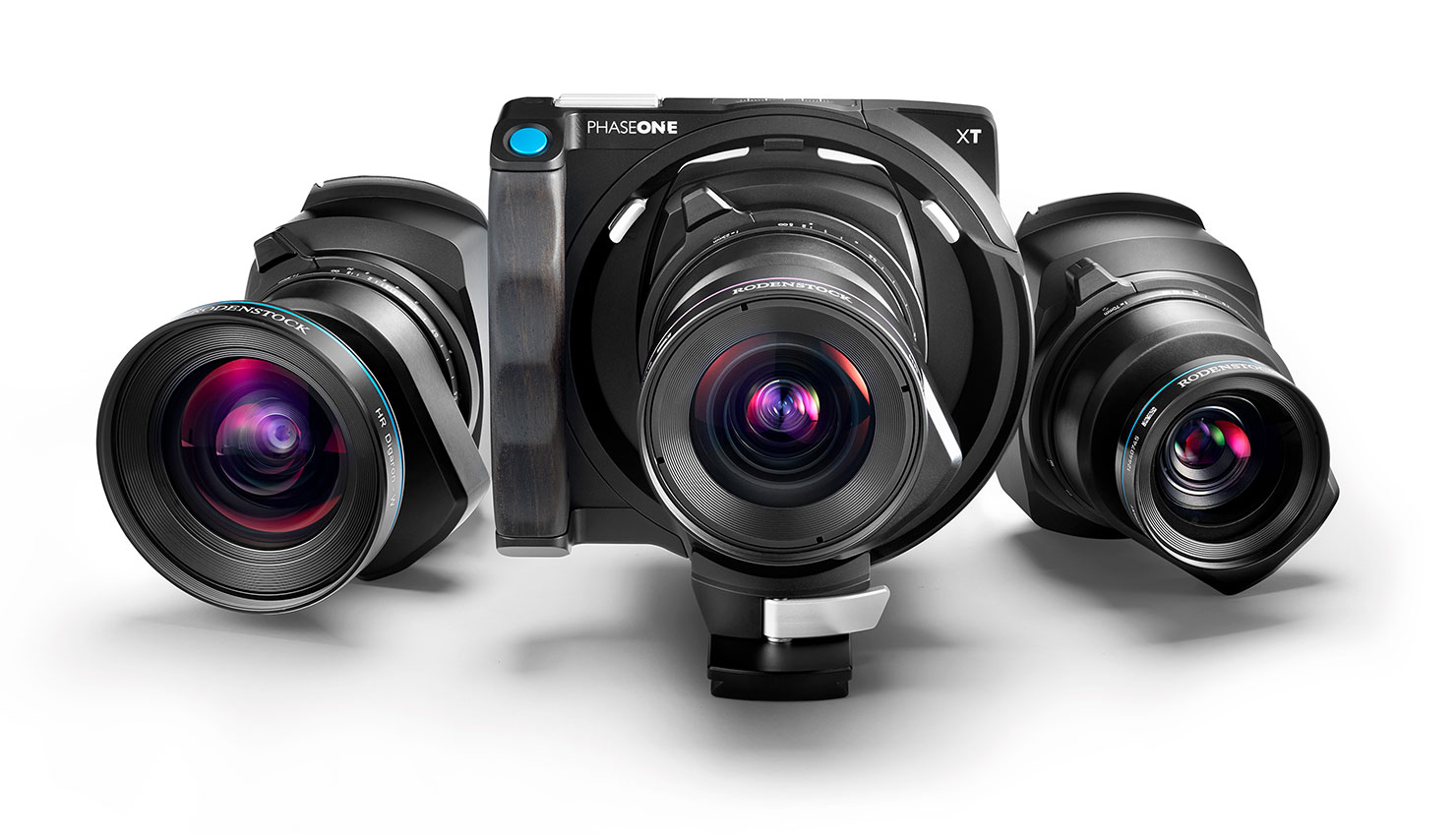
Married to a new breed of stunning Rodenstock lenses (which replace the old style of copal shutter mechanisms with Phase One’s brand new “X-Shutter”), the XT system now offers the pinnacle of image quality from some of the finest glass in the world. All this technology has been fully integrated into the very latest in camera design, delivering unparalleled image quality from the best full frame medium format sensor and digital back available in the market today.
Introducing the Phase One XT Field Camera:
Am I biased? Well, of course I am!
Not only have I been involved in the theoretical development of the Phase One XT camera for a while now, I’ve also been lucky enough to use it “in the field” over the past few months – and to say it’s a great piece of kit would be a genuine understatement.
The Ultra-Wide Challenge
As many of you will know, I love shooting cityscape and landscape images with an ultra-wide field of view. There’s something unique about the perspective that these images deliver, when the scope of the photograph is wider than we can normally see with our own eyes.
For years, those images have been delivered by one of my favourite pieces of glass on the Phase One XF camera – the 28mm medium format lens. The challenge of keeping that image quality at the very best, however, has been getting more and more difficult with each and every improvement in sensor resolution. What was once perfect at 80MP was starting to become just “great” at 101MP on the IQ3/4, and on the latest IQ4/150MP, there’s some noticeable softness around the edges in certain situations.
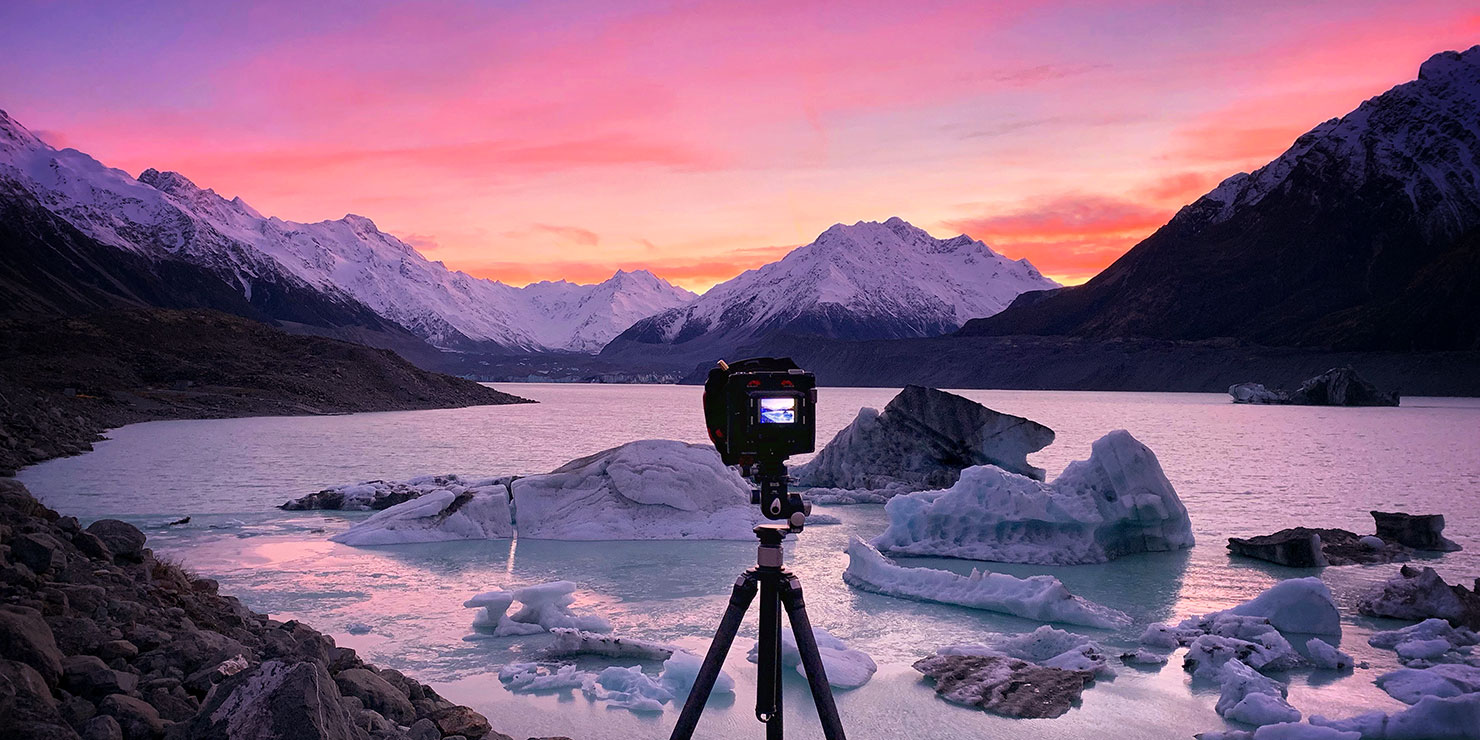
Enter: The Technical Camera.
“Tech Cam”, “Technical Camera”, “Field Camera”, even “Medium Format View Camera” – we’re generally talking about the same thing in the industry – a more traditional style of camera system which offers lenses with a larger “image circle” than a 35mm+ DSLR and more often than not, the ability to “shift” the sensor around that circle to varying degrees.
That “shift” functionality allows us to capture multi-shot panoramas on the exact same plane (without the challenges that come from moving the lens perspective to do so), along with fixing perspective distortion in-camera, preventing lines from converging/diverging as we look over or up to a city skyline without resorting to losing image data from digital keystone corrections later on.
These cameras have typically been matched to the highest quality glass produced by specialist manufacturers such as Rodenstock, including the amazing 23mm (<16mm equivalent) Digaron lens which would be ideal as a 28mm replacement for my work – but having played with the cameras for some years now on-and-off, I’ve always found them frustrating in terms of usability in the field.
Slow to set up, “fiddly”, outdated mechanisms (think of something that resembles a syringe as a shutter release) and a completely disconnected “system” in terms of communicating and controlling the aperture, shutter speed and other aspects to the camera itself – these ancient designs delivered stunning images, but in a disconnected package of ageing components that could be difficult to use.
In fact, there’s now a huge concern in the industry that the world has run out of the famed “copal shutter” mechanisms, putting the future of some of these lenses and systems at real risk of disappearing as they currently stand.
While some of the most iconic camera makers out there, from Cambo to Alpa to Linhof and many more, have tried to come up with solutions by themselves – without a truly integrated approach from lens to sensor, there’s always been something missing, to my mind, that stopped these systems being adopted more widely across the industry.
Indeed, in my opinion, even Phase One’s original collaboration with Alpa on the “A-Series” fell short of the mark, with levers, dials, cables and way too much manual intervention needed to get the best out of every shot on the system. For my style of photography, sometimes every second counts on a rooftop, and a non-integrated system delivered too much additional work and complication to capture an image well.
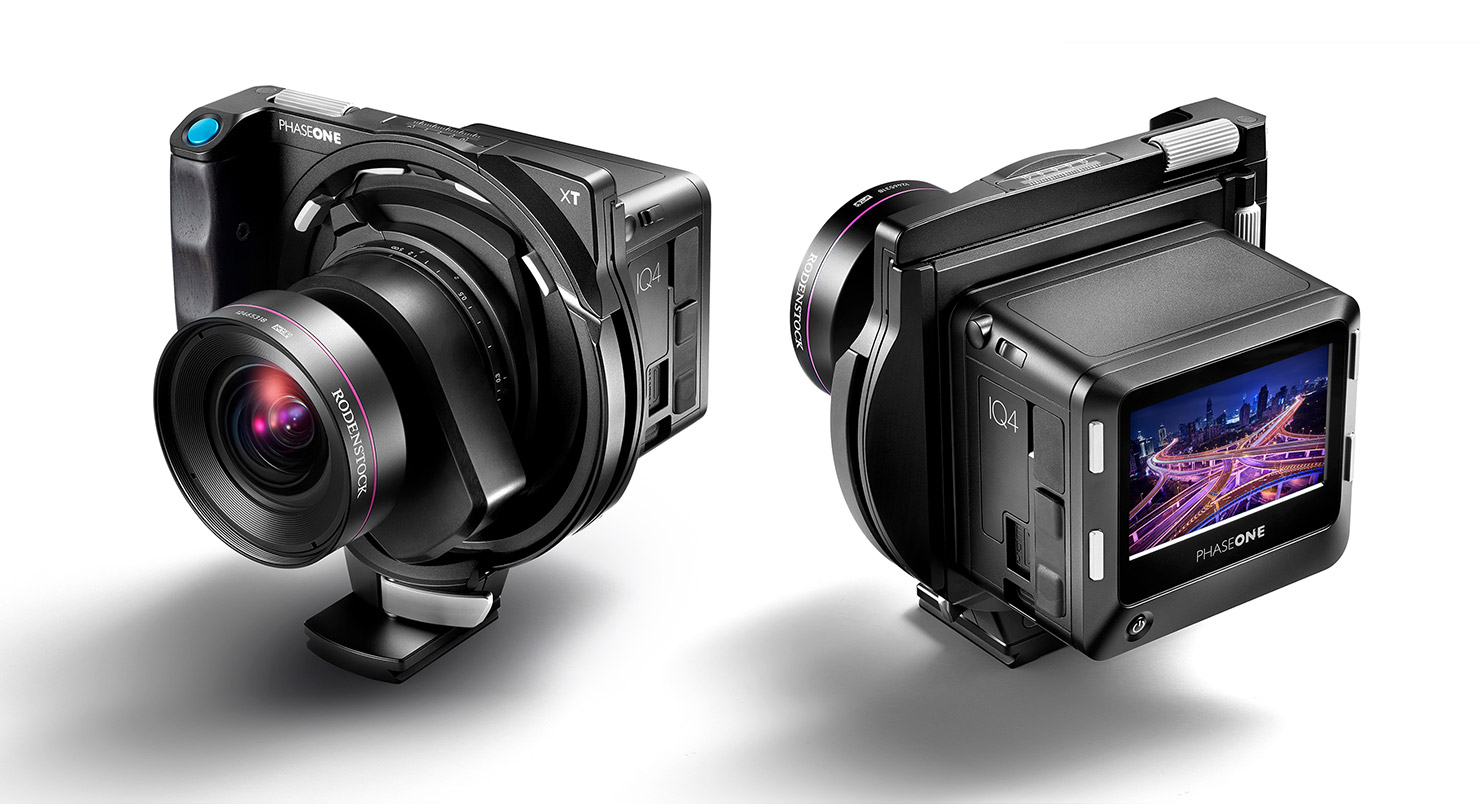
And now, enter: The Phase One XT Field Camera
Designed from the ground up to be a truly integrated, fully digital, platform for the future, the new XT Camera system is built on the exact same Infinity Platform as the IQ4/XF setup that I’ve been using since its own launch last year.
With the same workflow, same sensor technology and same functions – switching between both systems has been made into a seamless process, while allowing me to use the very latest lens line-up from Rodenstock which delivers stunning results – time and time again.

The brand new X-shutter and integrated IQ4 communication means changes to aperture are now done from the digital back (instead of by manual movement of levers and dials on the lens itself), and shutter speed is all controlled from the same interface – with all of those settings being automatically stored within the image data too.
Of course, all the standard IQ4 features are all available to use – Bracketed exposures, Time-lapse, Frame Averaging, etc. Meaning, for me, the same weight-saving benefits I had from the reduction in use of filters following the introduction of the IQ4’s Creative Control package are right there when I need them.
Scotland – A Small Confession
So, speaking of Frame Averaging, I have to admit we weren’t in Scotland purely to shoot video for the Long Exposure Guide this summer – we were also testing both Frame Averaging and the brand new XT Prototype around the highlands…
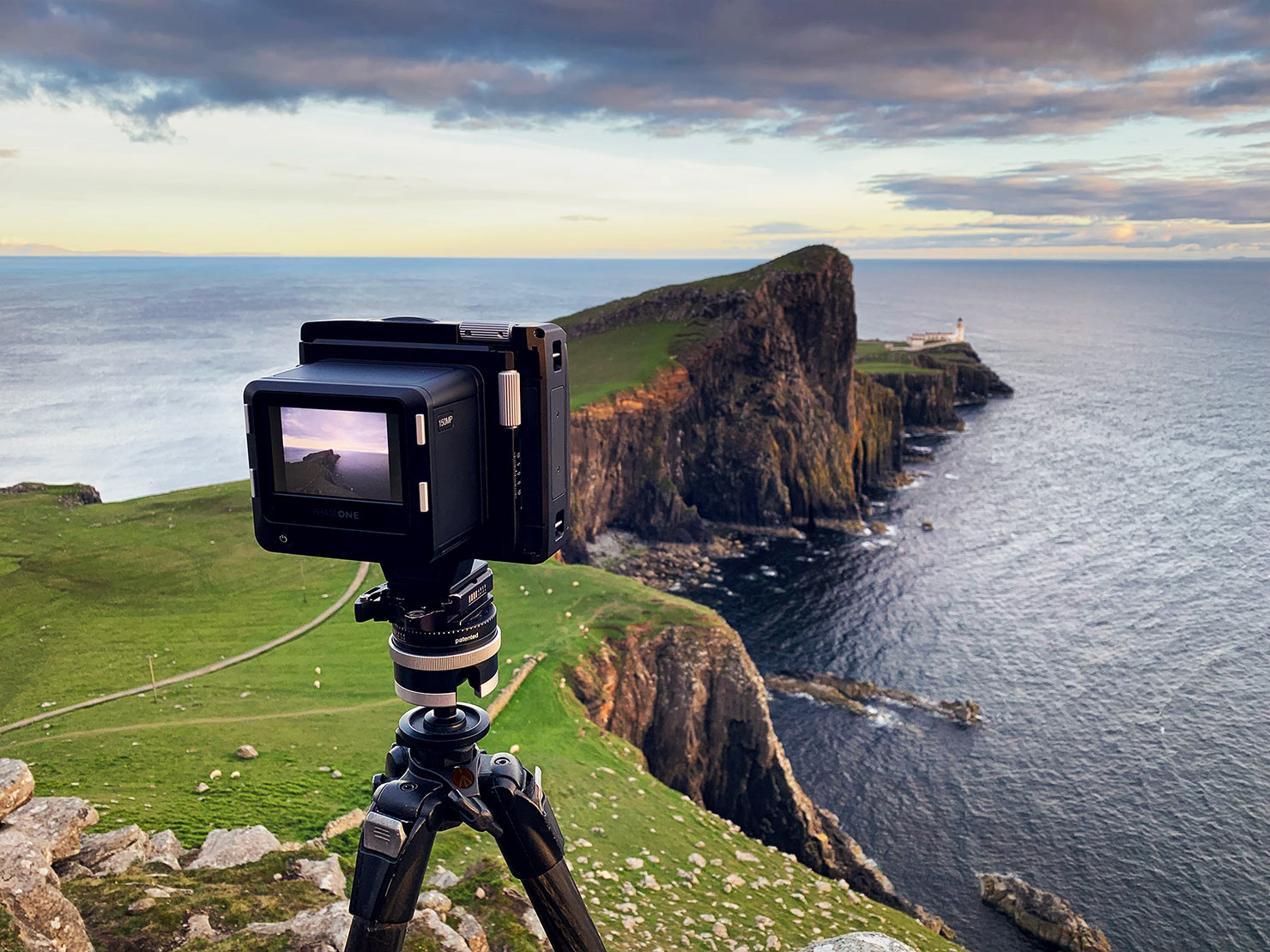
And with those lens options, plus the relatively small travel size of the system, I have to say it performed excellently throughout our entire trip.
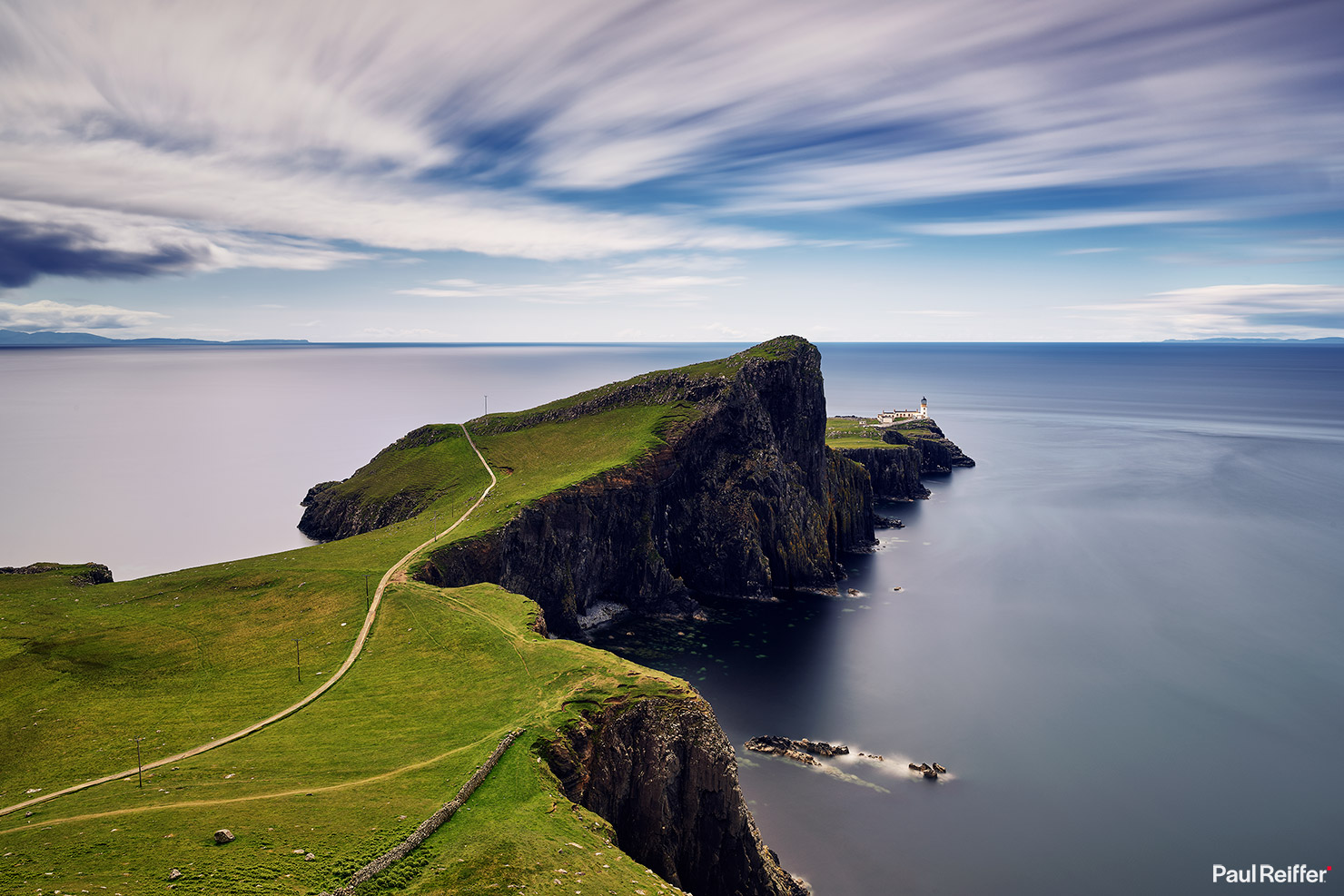
Remember, this image has no solid ND filter used on it, in daylight, thanks to the awesome Frame Averaging technology that was released a few months back. Shot with Rodenstock Glass on the XT, the quality of the image itself (even at 50% crop, below) is simply stunning, especially when we consider how wide that field of view is in the full image.

From a usability perspective, this is a camera that’s obviously been built on a digital platform right from the beginning. No longer are we stuck using 1970’s technology that’s been “adapted” to make it work with today’s digital backs, it’s the very latest innovations in camera technology which have been designed from the ground up and combined with Phase One’s Infinity Platform throughout.
Shooting with the XT is so refreshing.
Gone are the dials, the levers, the cables and all manner of other distractions. The interface is completely intuitive, even for more complex setups such as bracketed captures – and the shift mechanism is evolved from some of the best in class movement designs on the market.
It still helps me to slow down, however – to take time, to consider every aspect of my shot. I know I have the best glass, the best sensor and the perfect camera system to marry it all together into the final image – so all I have to concentrate on is my composition and exposure, carefully and with purpose.
To enhance the usability even further, Phase One have integrated a really solid tripod mount (with Arca Swiss compatible connector) right there into the camera body.
It’s been custom designed to have a perfectly free-flowing, built-in, rotating function that’s been formed to turn precisely around the centre of the lens with a lockable bottom plate to connect directly onto your tripod head.
Say goodbye to those annoying L brackets that never, ever, seem to fit quite right – and hello to the smoothest mechanism for turning a camera from landscape to portrait without altering the position of the lens!
Focusing is a breeze – thanks to the large control ring on the new Rodenstock lenses.
Oh, yes, and what about that blue button…
Thanks to the way it’s possible to configure the XT in future, there are loads of potential choices that can be made as to what each user would like the button to do – but for now, this is the first time I’ve seen a Field/Tech Camera footprint with a shutter button on the body itself!
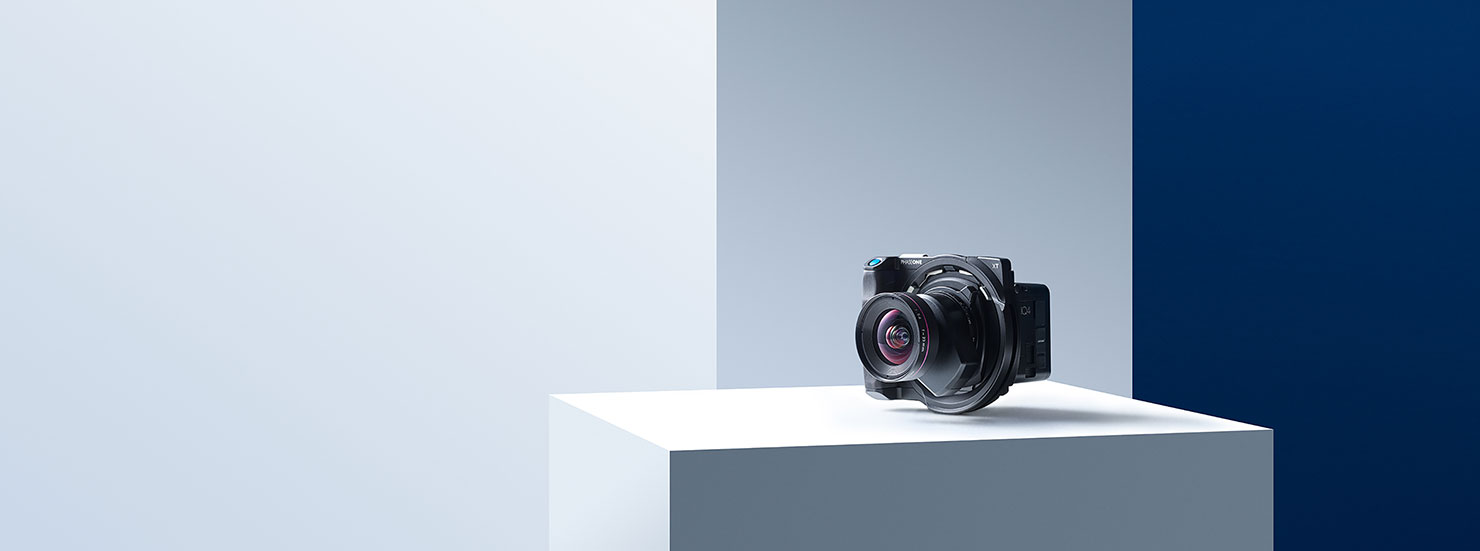
Up on the roof…
Most of you will know that no review of mine would really be complete until I’d taken the camera somewhere up high – and this is no exception. I’ve shot from this particular location many times over the years, but there’s always been a problem with the view: it’s so wide!
Whereas, in the past, my 28mm XF lens would “do the trick”, on the new 151 megapixel digital backs, it struggles. So with the opportunity before me, I set off to the top of the roof, intent on seeing what this piece of glass could deliver.
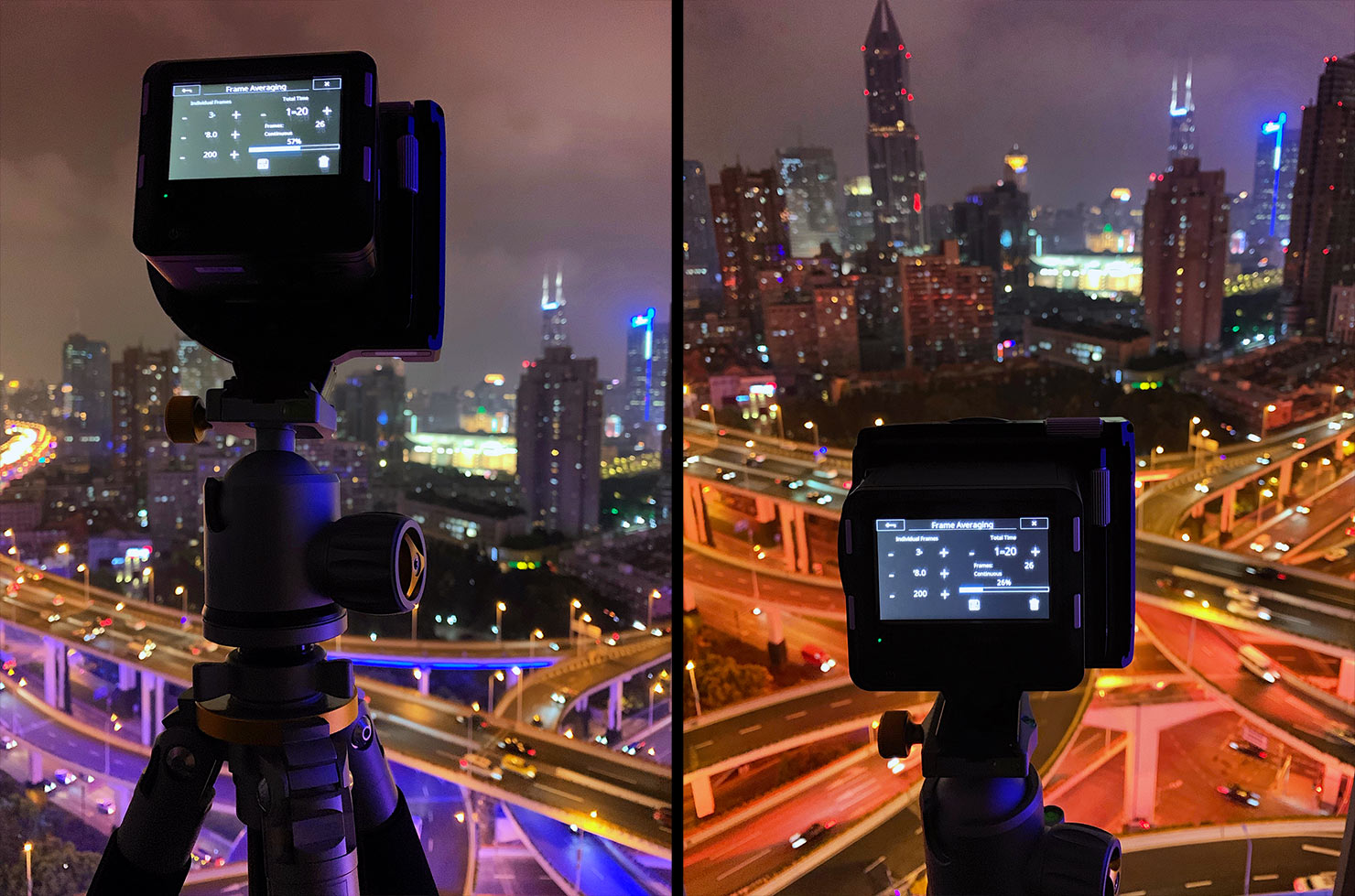
On an XF body, the 28mm lens is the equivalent of around 17mm on a 35mm frame basis. On the XT, the 23mm Rodenstock lens gives me just wide of 16mm – and tack sharp all the way through.
Let’s also consider this was the lightest backpack I’ve ever carried when containing full frame medium format camera system inside. The XT really is designed to be a compact travel solution in comparison to my XF system that I left downstairs.
Putting Frame Averaging through its paces too, this shot was made up of 2 minutes’ worth of 3 second frames being averaged, each at f/8, ISO100 – resulting in a single raw file that looks stunning:
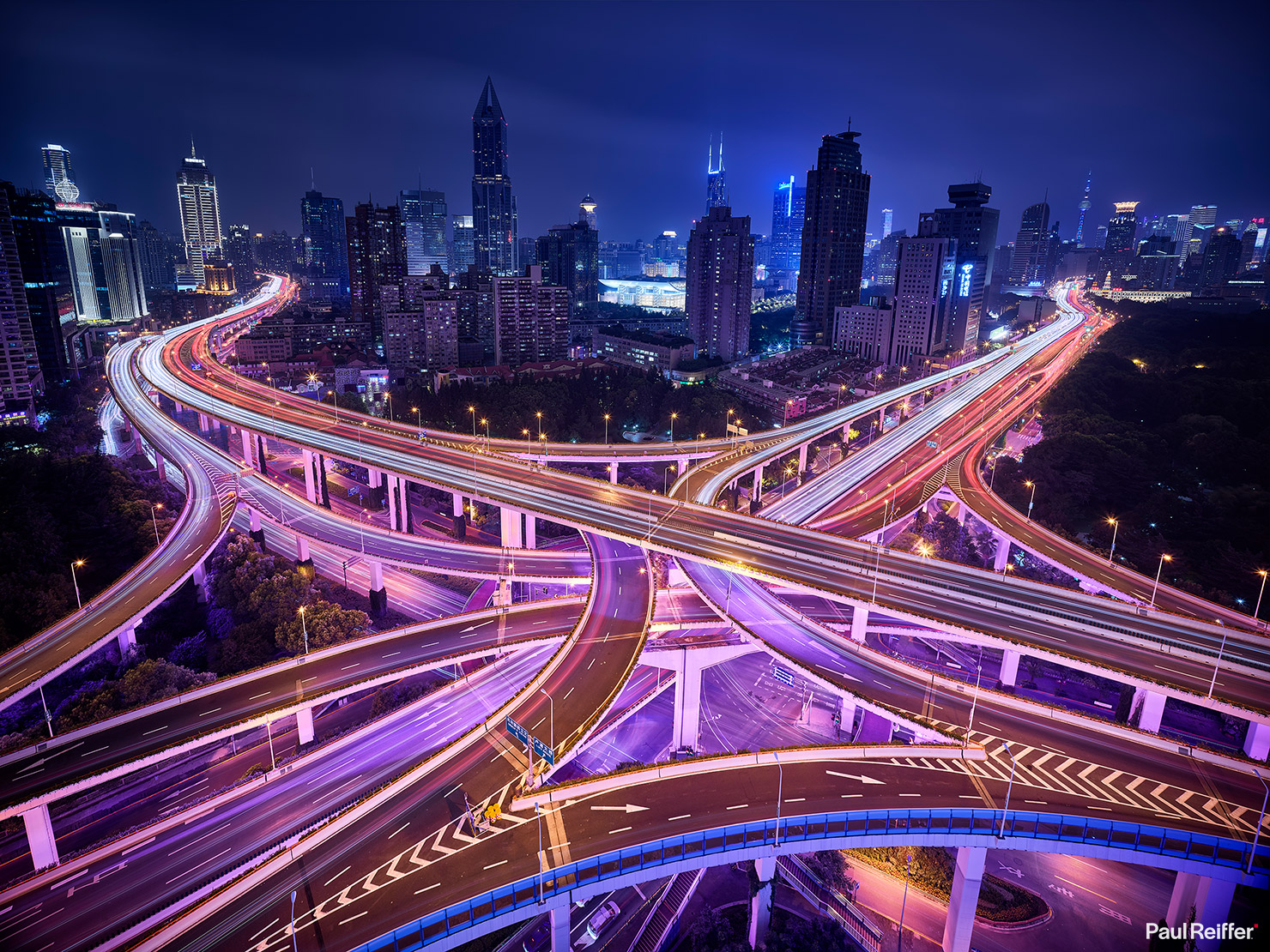
Again, let’s look at the detail on a 50% crop (we can only show 100% online on retina displays, but if you have one, you’ll notice the detail):
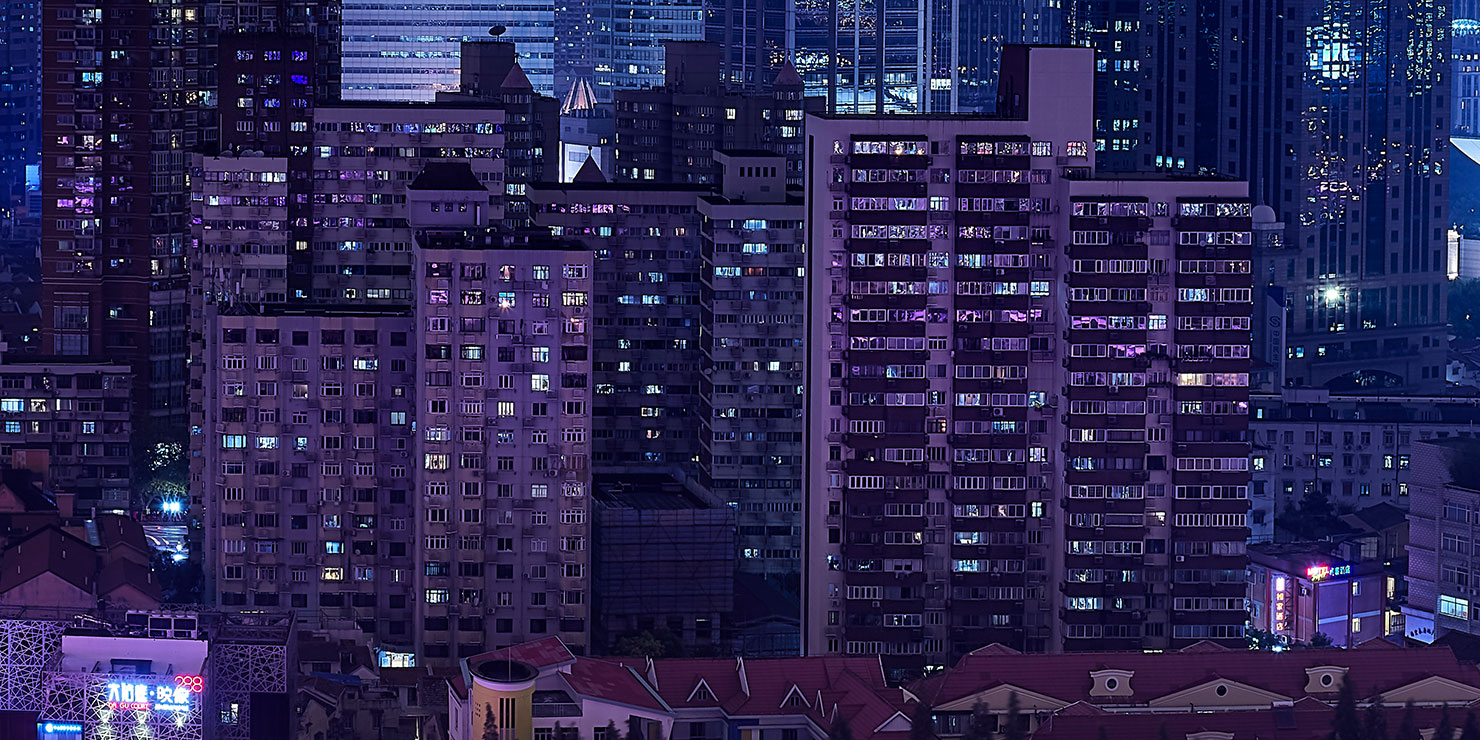
Yes, those buildings are around half a mile away, and we’re looking into the windows – on a <16mm equivalent lens! Tack-sharp, through and through, this lens really does deliver the optimum image quality when part of the IQ4 platform.
Using the shift function for this shot, it was also possible to reduce (but not quite remove) the diverging lines of the skyscrapers as we looked down over the city. There’s a maximum of 24mm shift in X and Y on the Phase One XT camera body, which is used sparingly on the 70mm image circle of the 23mm lens, but can be pushed much more aggressively on the 32mm’s 90mm circle or even the 100mm circle on the 70mm lens option that’s also available.
In Summary…
To me, the brand new Phase One XT camera isn’t designed to replace my existing XF system.
There are some things that it simply can’t (currently) do, where the XF excels:
- It can’t control flashes with a built-in remote
- It’s 100% pure, manual, focus – no auto options at all (but the IQ4 DOES have focus peaking in the display.
- You’d struggle to shoot in continuous mode for quick-succession studio shots
- There is a limited range of lenses available (23mm, 32mm, 70mm) with no zoom options
- You don’t have a viewfinder (in the tradition sense), only the live view function on the IQ4’s screen
But the things it CAN do – the things it’s DESIGNED to do – are executed with absolute perfection.
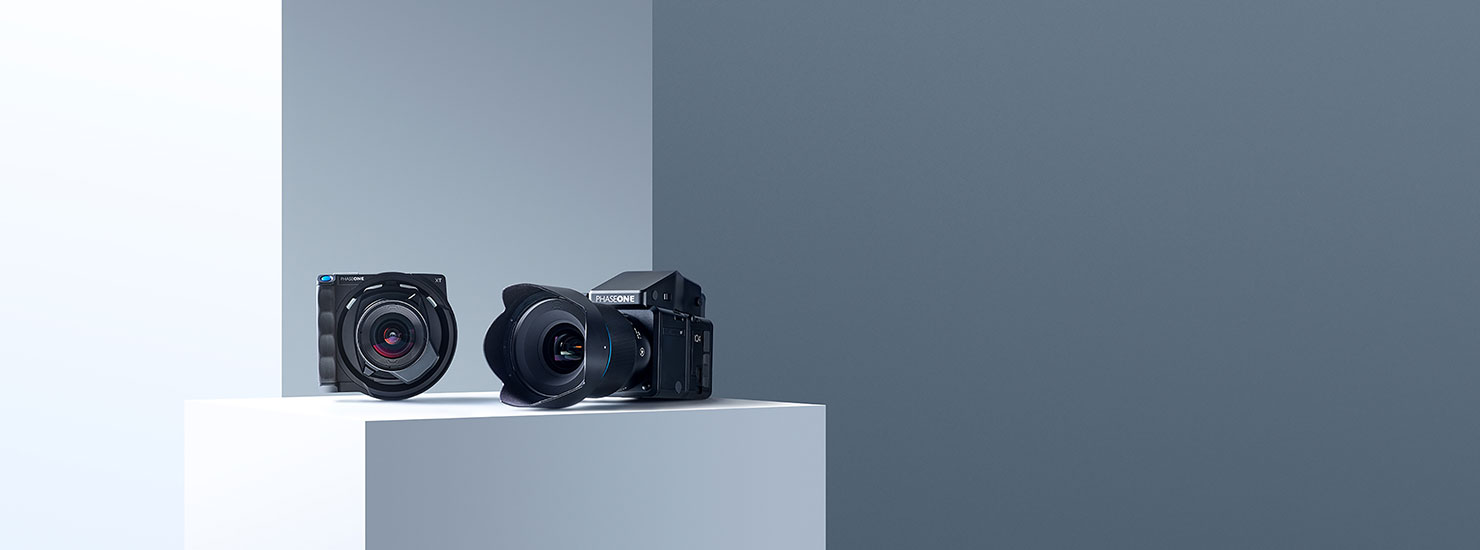
For me, this camera is an add-on to my kit bag. For much of my commercial work, the XF will remain my go-to beast as I travel around the world.
But for that one “killer shot”; ultra-wide, landscape/cityscape, tack sharp edge to edge, with the ability to shift the image around the circle…
I’m sold. The XT will be coming with me too!
For more info on the new XT system, check out the main Phase One site.